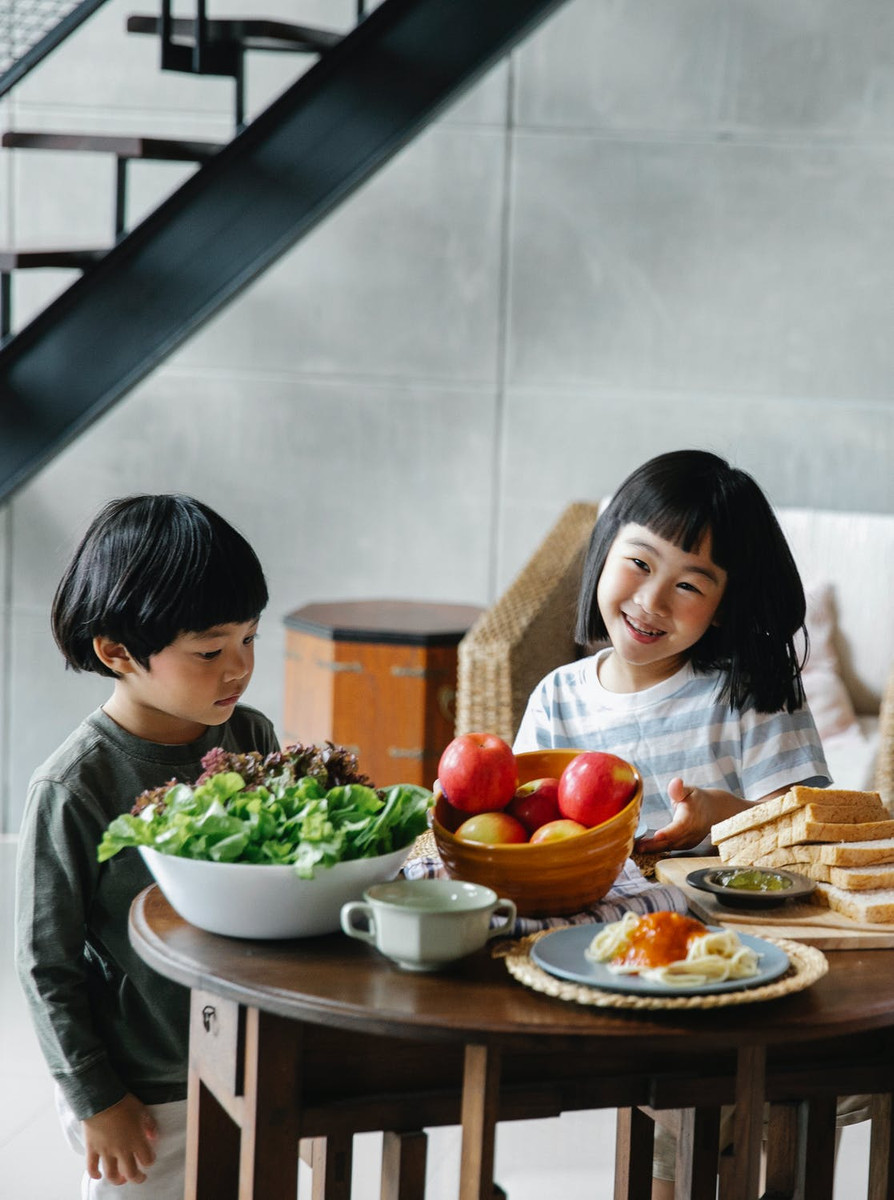Children's Etiquette: Table Manners
1st May 2021
I’m a big believer of eating together as a family, especially when the parents are seen cooking and preparing food, as this helps create healthy eating habits. Food should be experienced as a nurturing discipline by parents for which children can learn through example. My family has always instilled the importance of mealtime when I was growing up. However, it wasn’t until I had my own children, that I realized the absolute necessity of this. Eating together has also been scientifically proven to promote happiness within your family, help manage portion control and even boost grades. Also, it’s great to let your kids help out in the kitchen, this will lay a great foundation for their culinary, social and nutritional skills.
LEADING BY EXAMPLE:
Many eating disorders (including obesity and anorexia) can stem from the unhealthy eating habits of parents, but also, from not eating wholesome meals together as a family. Showing kids through example on how to create delicious, healthy meals will no doubt guide them in the right direction. A child who sees his or her parent preparing meals creates a healthy relationship with food and nutrition.
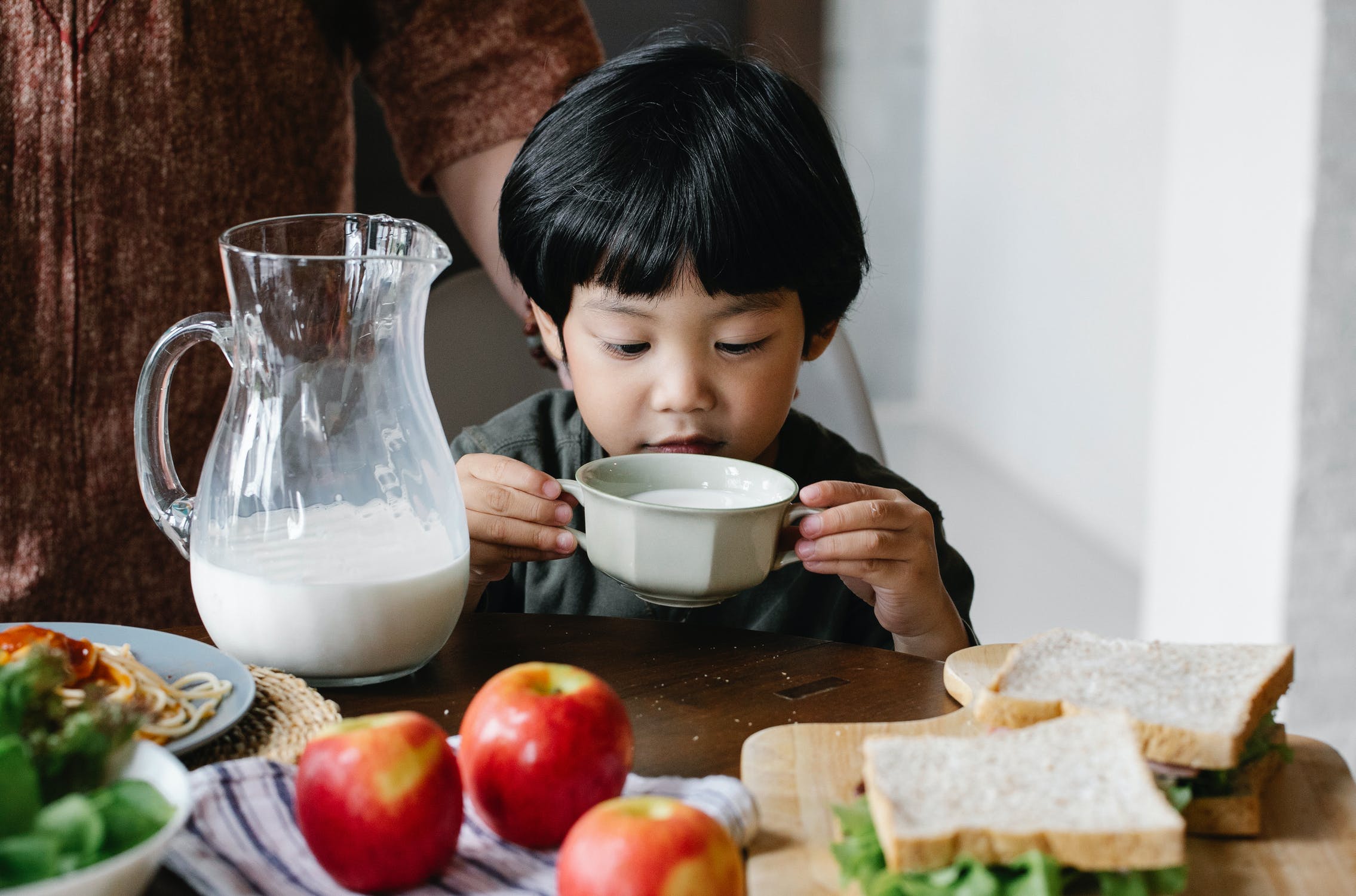
EATING TOGETHER PROMOTES COMMUNICATION SKILLS:
Children who have meals in front of the television or eat at different times from their parents, often don’t get the chance to engage in adult level conversation. This is detrimental to communication within the family and their social development, as the dinner table is often a safe space to talking about issues in and outside of school.
SITTING DOWN FOR DINNER AT A SET TIME EVERY EVENING:
This creates a sense of routine and stability for children. Children are confronted with change on a daily basis, which is essential for character development, but can also be quite stressful. Offering routines and traditions like eating together at a set time can make life a little easier. Making kids feel more secure and also reduces their anxiety. This also allows children to be able to structure and balance their own lives later in life.
“Everyday family rituals can build security, improve connection and cooperation.”
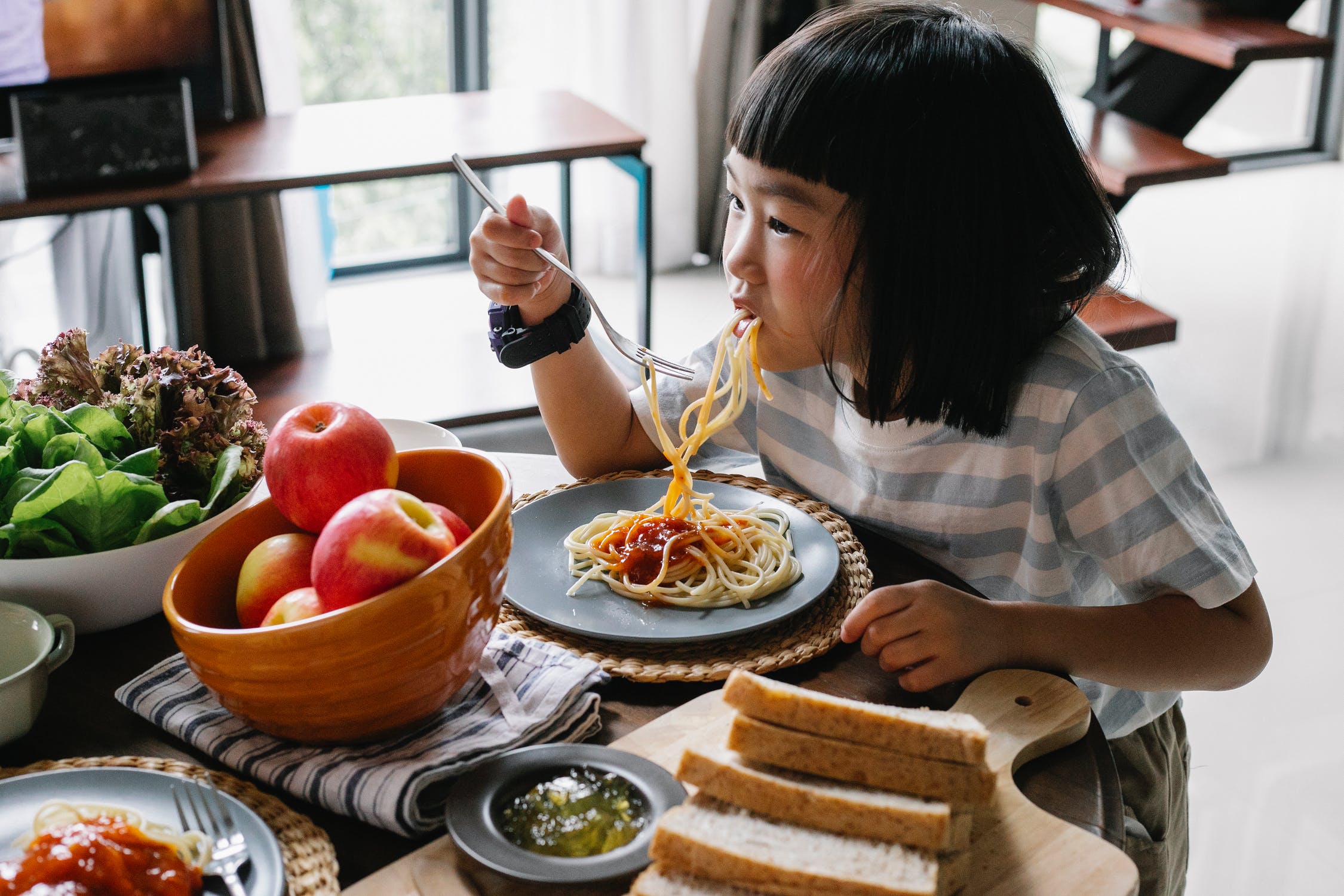
TRADITIONAL TABLE SETTING GUIDE:
Table Manners Should Be a Part of Every Child’s Development: Be kind and considerate towards others during mealtime, whether it’s at home, a restaurant or at friend’s house. Most children should have a basic comprehension of table etiquette; all it takes is a little repetition and practice. Let’s go through all the basics that can be applied at every meal and in everyday life…
CLEAN HANDS:
Create the habit of washing up before dinner and always coming to the table with clean hands.
NAPKINS:
Once seated at the table, their napkin always goes on their lap. Napkins are used to wipe their mouths, not the sleeve of their shirt. Also, explain that napkins are there to protect their clothes from messy spills and dropped food.
ELBOWS OFF THE TABLE:
Those pesky little elbows and any other body parts should stay off the dining room table.
WAIT:
Wait until everyone is seated at the table and has been served their food before you can start eating.
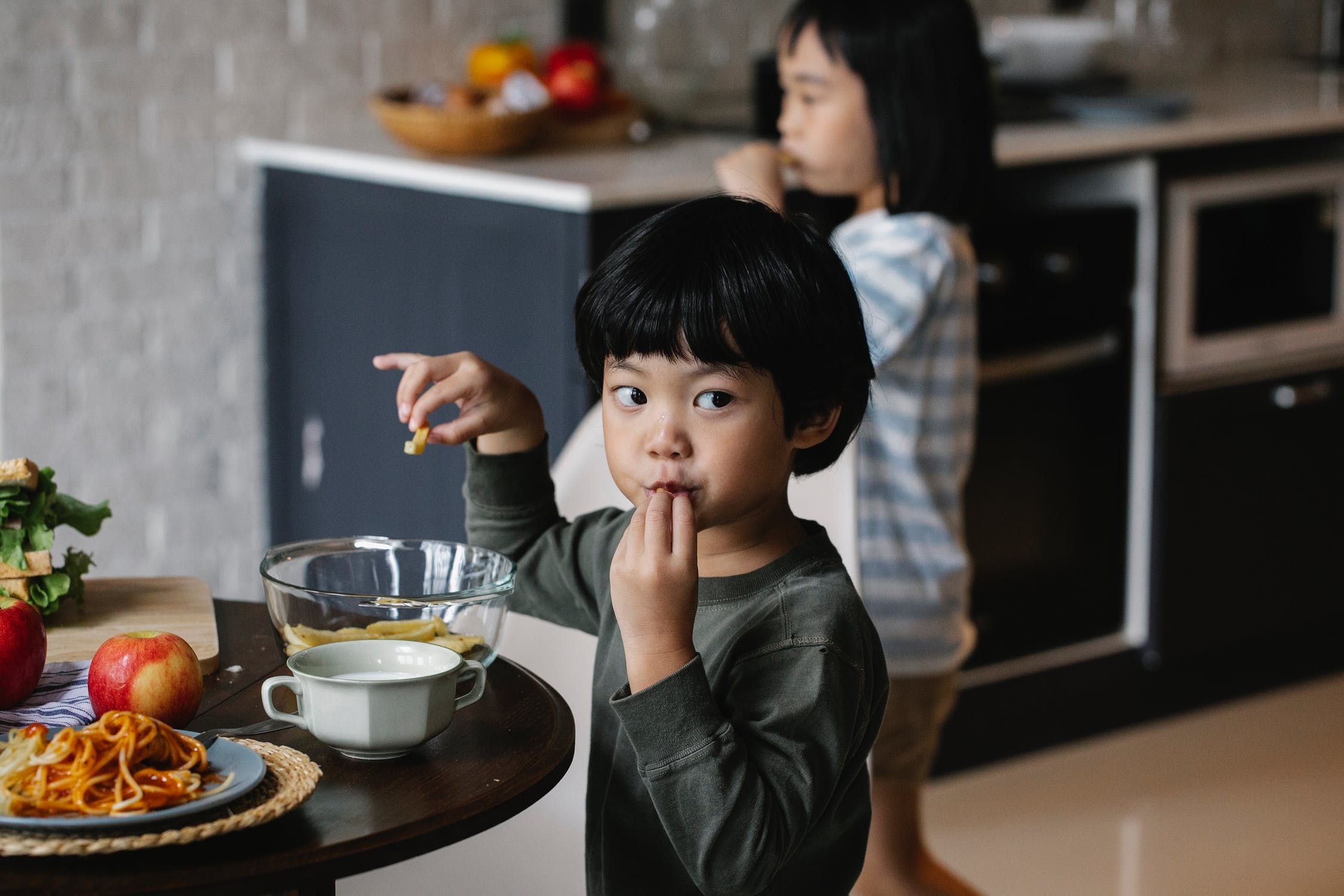
UTENSILS:
Use the appropriate utensils for your food, never using you hands. Unless, of course, it’s bread, pizza or any other finger friendly foods.
EATING UTENSIL ETIQUETTE:
There are two style methods for which you can teach your child to use their knife and fork. The “American” style, where the knife is initially held in the right hand and the fork in the left while cutting food, then putting the knife down and switching your fork to your right hand to eat. The fork is cradled like a spoon and used to scoop food from the plate with the tines up.
The “European” style, where the fork stays in the left hand with the tines down and the knife in the right. Also, referred to as the “hidden handle” because the utensil handles are hidden by the palm of the hand, while helping the thumb and forefinger.
PLEASE AND THANK YOU:
The importance of using “Please” and “Thank you” when at the table. Using “please” when politely asking for food to be passed. For example: “Please, pass the pasta,” instead of reaching over their neighbor’s plate. To show appreciation, always thank the host or whomever cooked the meal.
CHEWING:
Always chew with your mouth closed and never speak with food in your mouth. Sometimes give a friendly reminder to your child to hold on to their thought until their food has been swallowed.
TALKING POINTS:
Encourage your children to participate in conversation at the table, but teach your child it’s rude to interrupt. They should know sometimes they need to wait their turn to speak or to say, “Excuse me.”
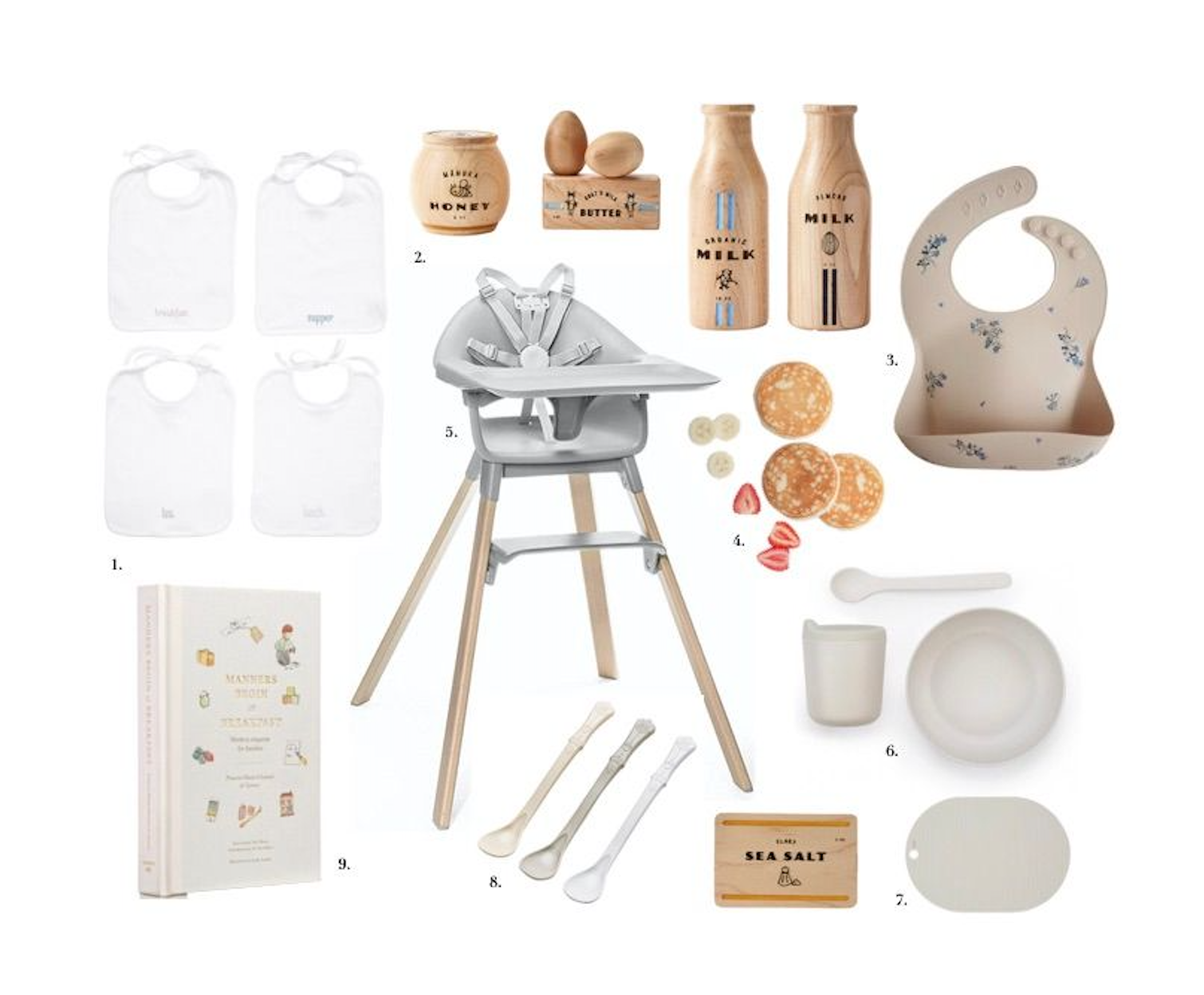
1. Bib Set in Dusty Teal, $59.00 at MarieChantal.com; 2. Milton and Good Dairy Play Food Set, $48.00 and Pantry Play Food Set, $48.00 at MiltonandGoose.com; 3. Mushie - Silicone Bib in Lilac Flowers, $18.00 at GarboandFriends.com; 4. Fluffy Pancakes Play Food Set, $48.00 at MiltonandGoose.com; 5. Stokke Clikk High Chair in Cloud Grey, $169.00 at Maisonette.com; 6. Baby Feeding Set, $23.00 at By-Ekobo.com; 7. Ribbo Placemat, $35.00 at Oyoy.us; 8. Spoon Set, $10.00 at GarboandFriends.com 9. Manners Begin at Breakfast, $25.00 at MarieChantal.com
Have a question for MC?
Email us at askmc@mariechantal.com

Join Us On Spotify
Browse MC's recommended playlists for bathtime, playtime and then when baby has gone to bed, grown-up time.


